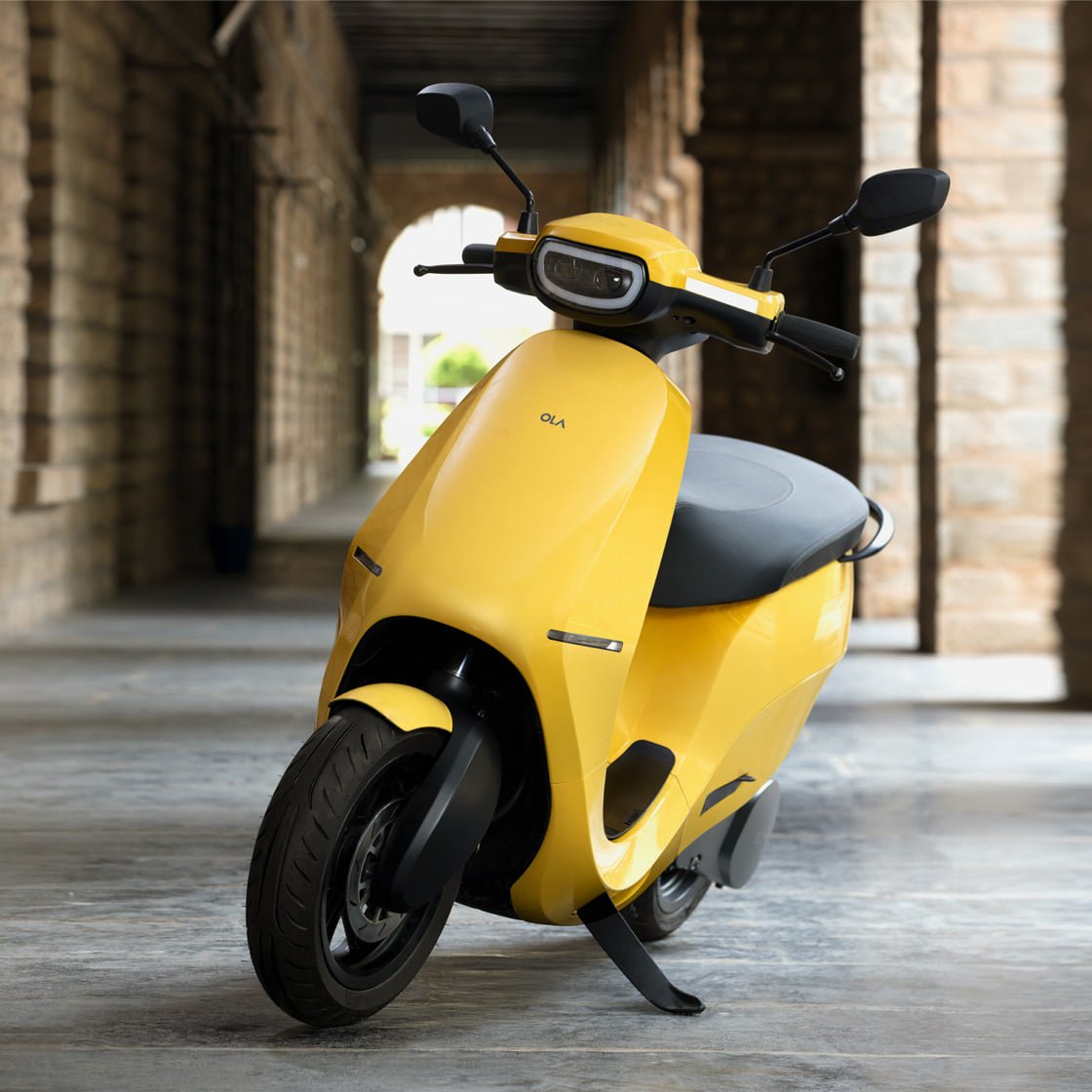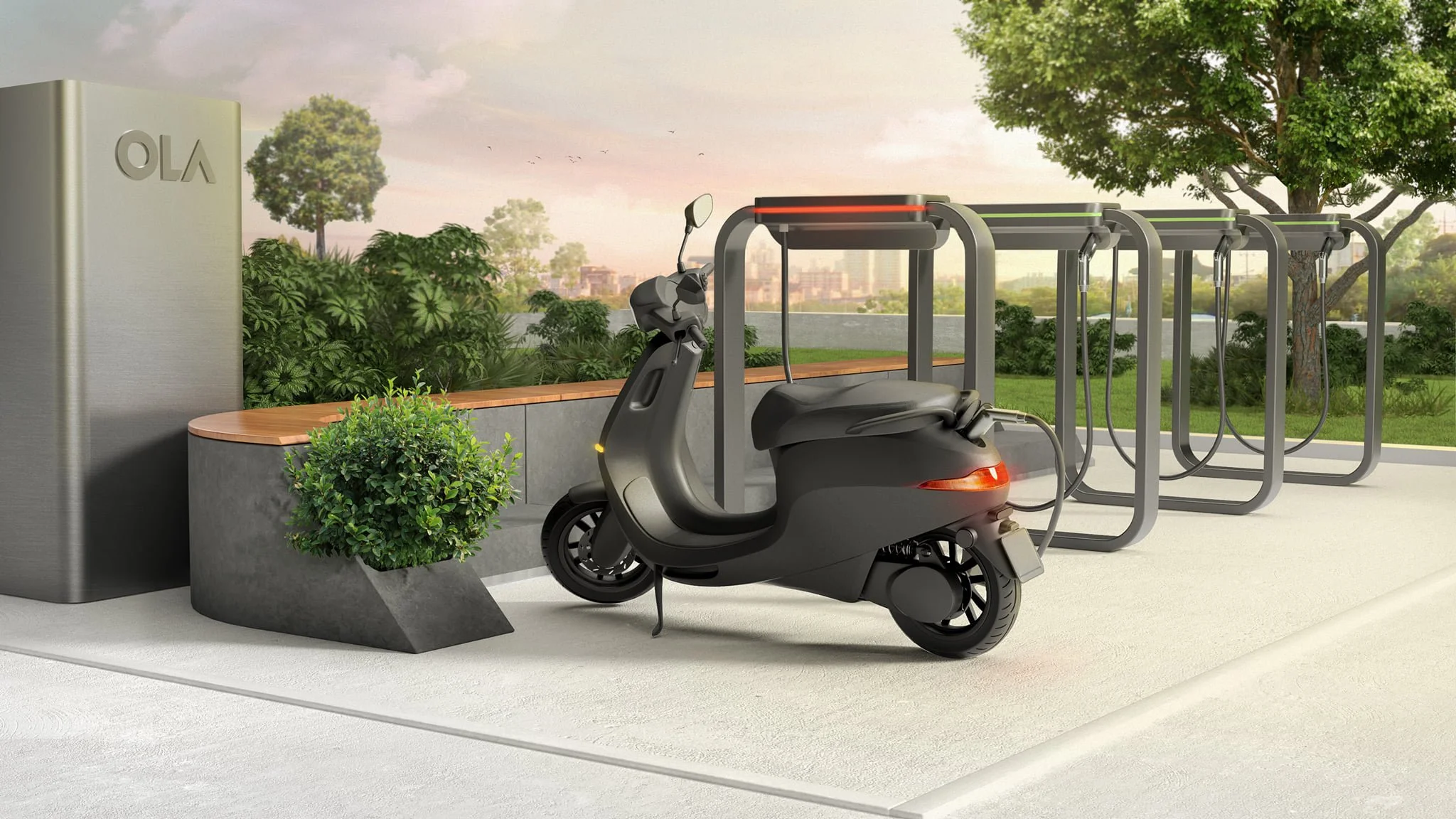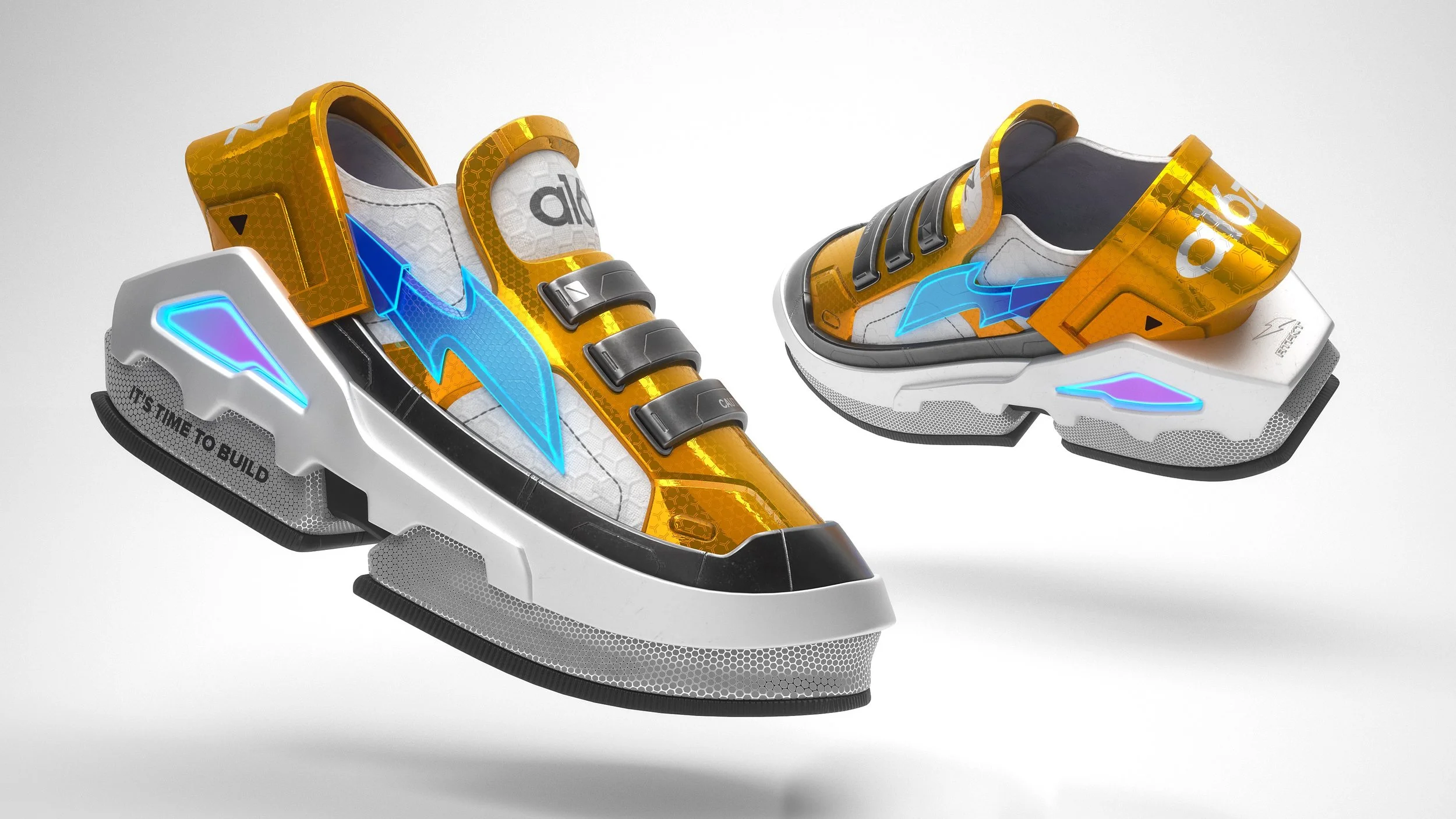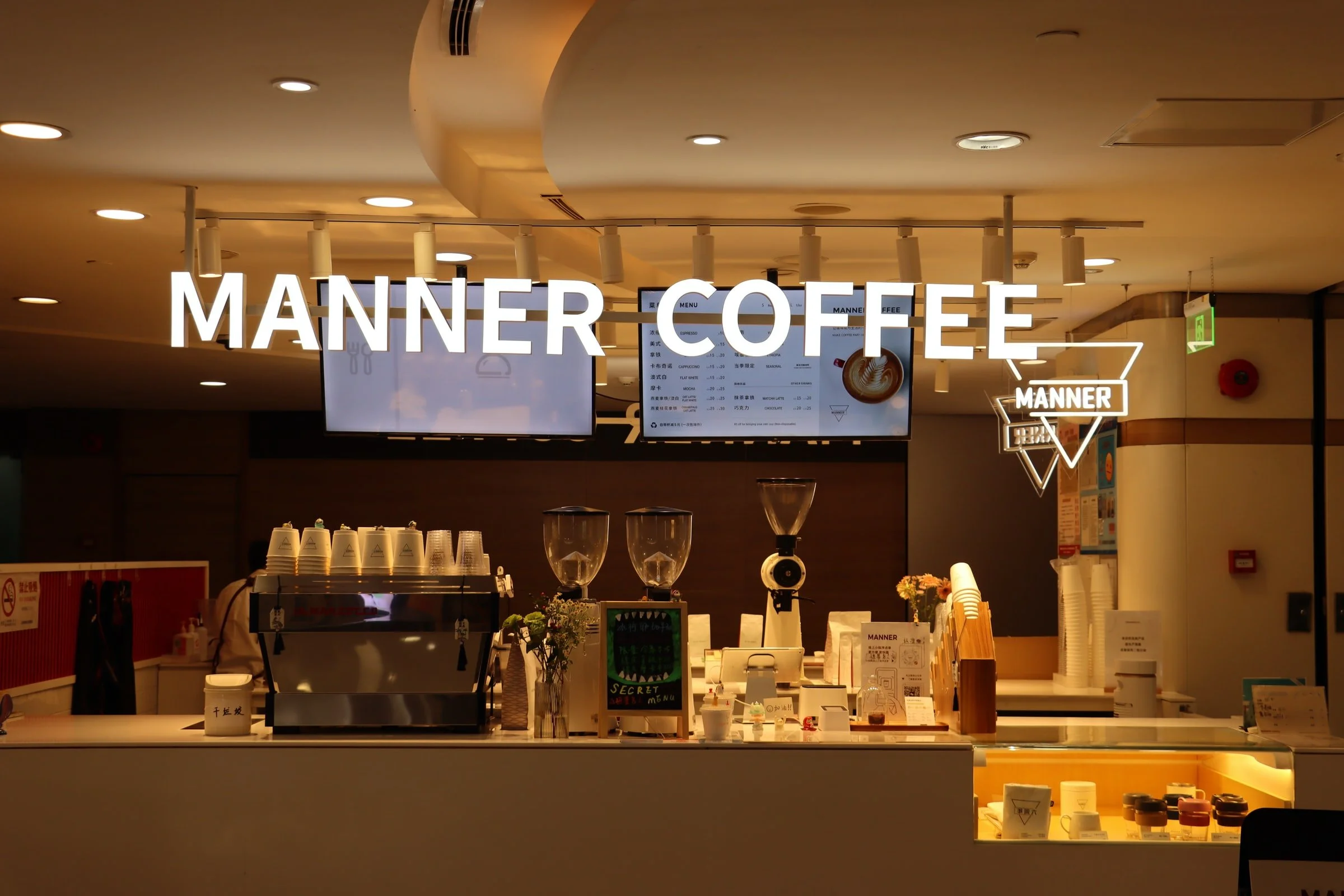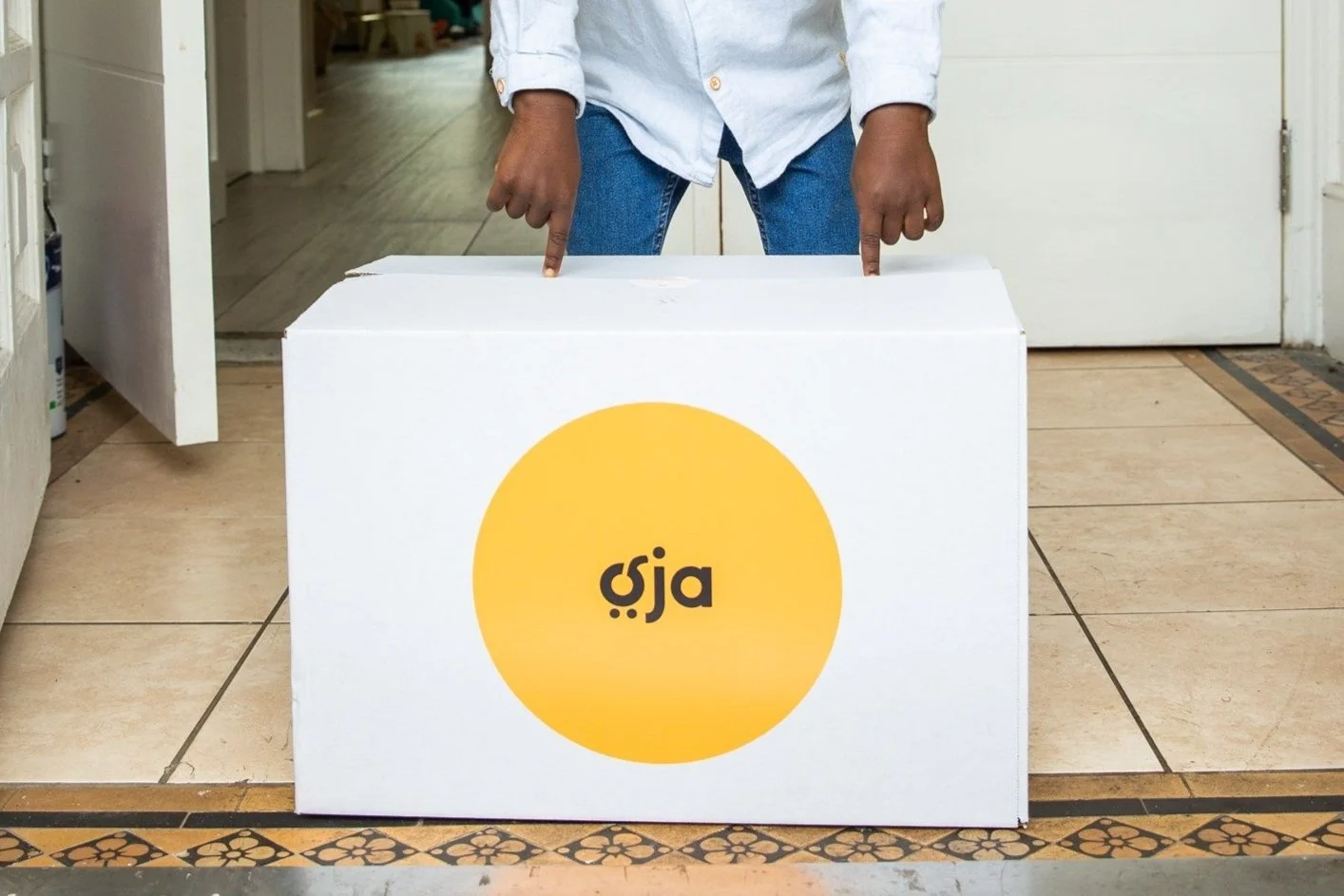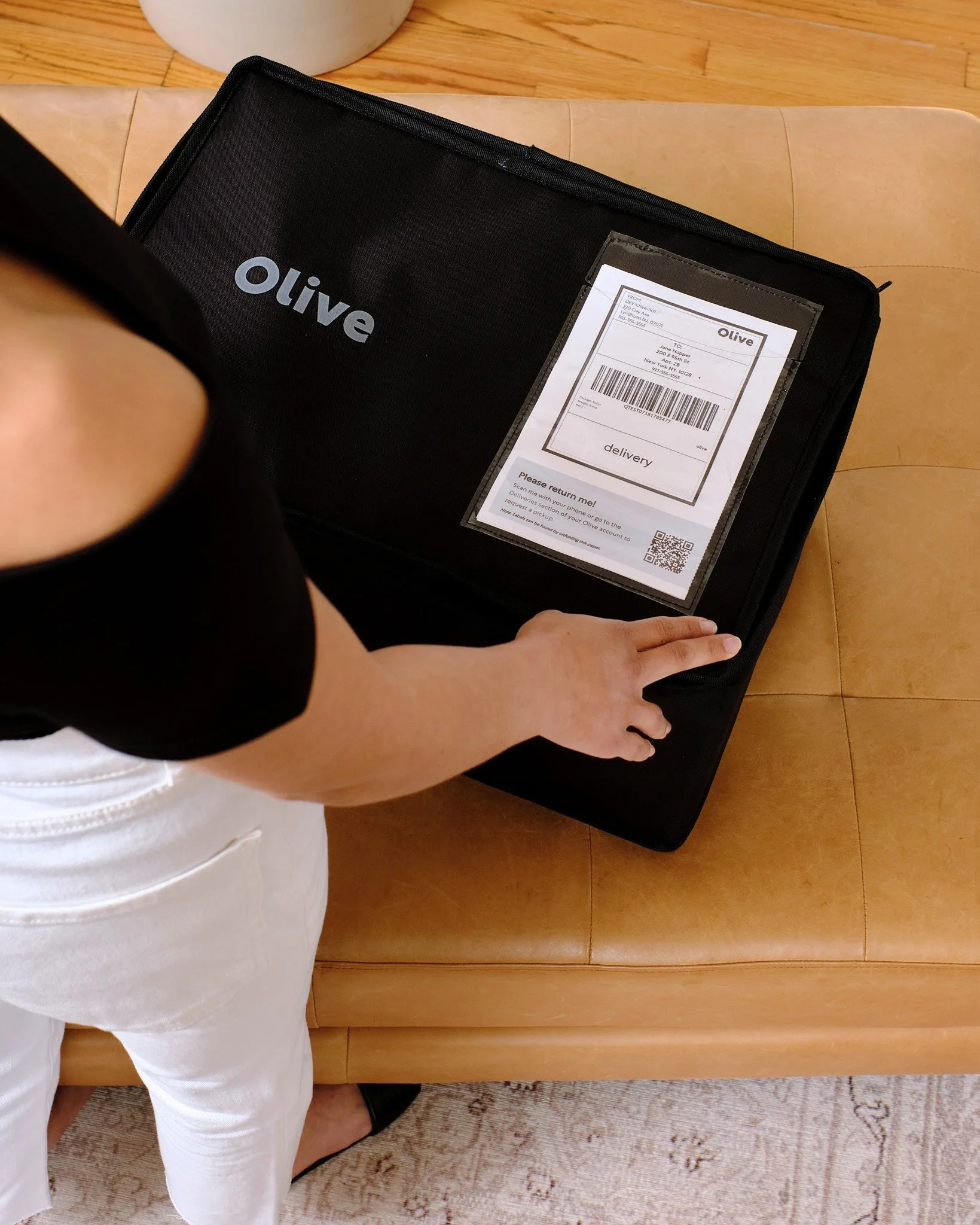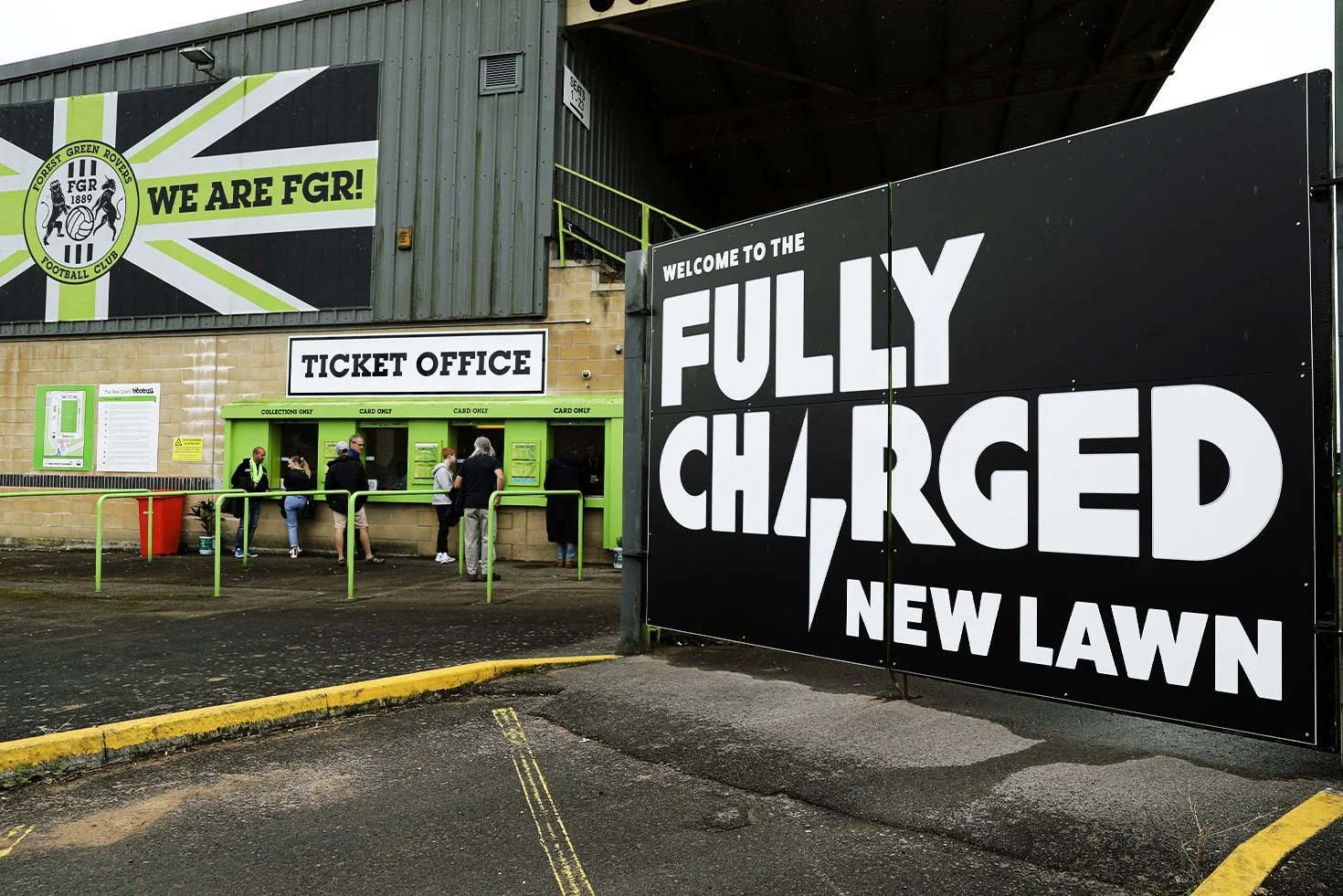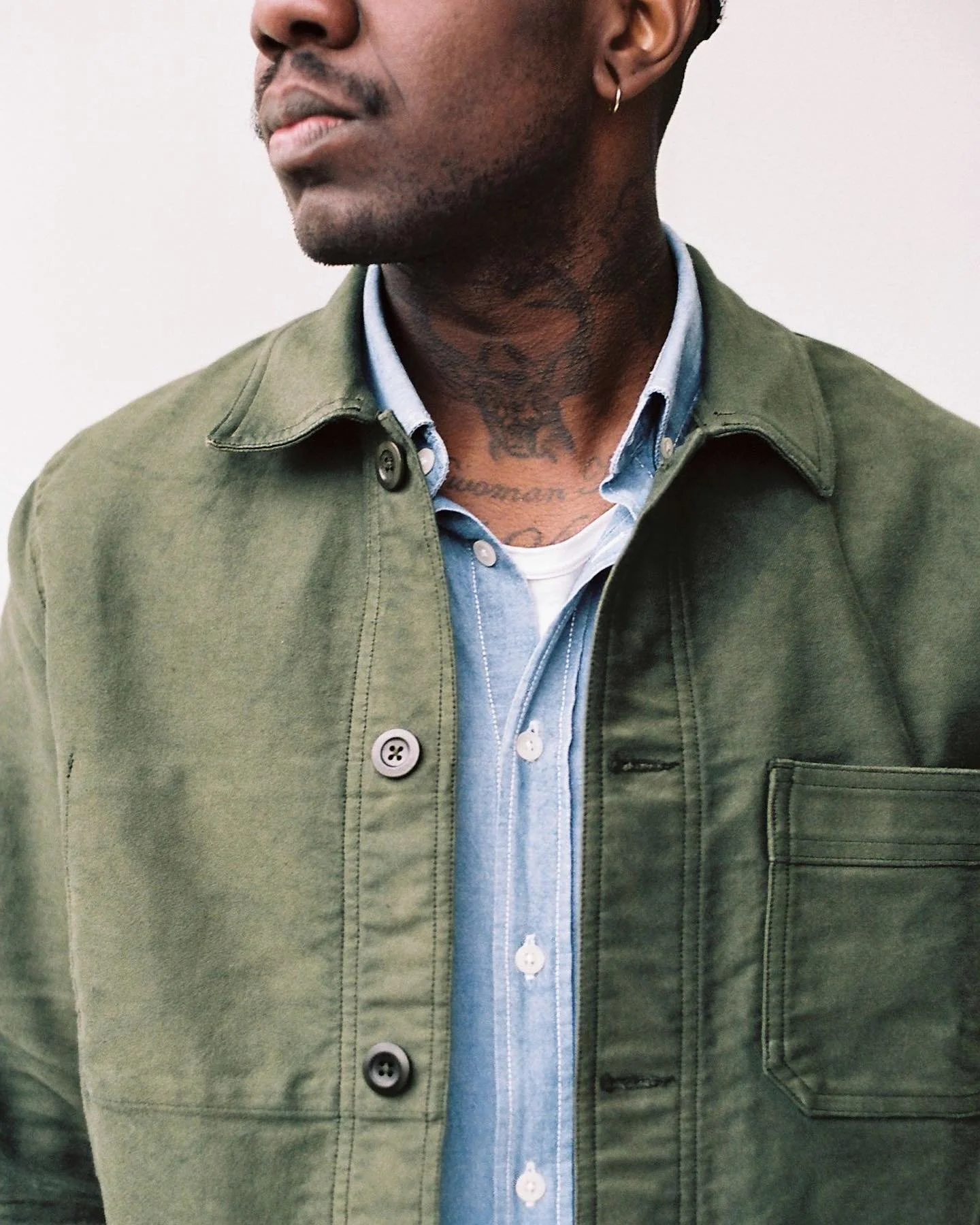Ola Electric — for green mobility for a billion
Ola is not new to disruption. It built itself as a leader brand in the ride-sharing category in India through several innovations such as Ola autos (three-wheelers) and Ola bikes, and importantly, by entering markets in the UK, Australia and New Zealand, Ola’s ambition is to build a global brand out of India.
It’s not surprising then that Ola announced plans to enter the EV market by setting up India’s largest electric two-wheeler plant with a capacity to churn out 10 million scooters a year in Tamil Nadu, India. For an internet-age company with no history of automobile engineering, it’s brave.
The Ola S1. Photo: Ola Electric
Unlike in the ride-hailing category, where it faces only one competitor – Uber, in electric two-wheelers, Ola faces competition from many established two-wheeler brands such as Bajaj, Hero and TVS. But the brand is audacious in its ambition. Total two-wheeler production in India is currently pegged at 20 million. Ola, with its mega factory, plans to create capacity that will be equivalent to half of the current total production.
The ambition is rooted in the fact that India is home to the world’s largest number of two-wheeler buyers, and this number continues to grow exponentially. According to McKinsey, the Indian e-two-wheeler market is expected to hit 4.5-5 million by 2025, accounting for 25-30% of the total market and 9 million by 2030.
Ola is committed to its mission of building mobility for a billion people. The company has announced ‘Mission Electric’, a pledge to support that no petrol two-wheeler be sold in India after 2025. With 80% of vehicles sold in India being two-wheelers, switching to an electric scooter should have a significant positive impact on the climate crisis.
Ola has received a massive response to the pre-booking call for its electric scooter, which could partly be due to the nominal token amount required to make the booking, but certainly indicates consumer enthusiasm for the launch. The key to success for Ola’s plan relies on a dramatic change in the two-wheeler industry rather than a gradual shift to electric scooters in 2022.


